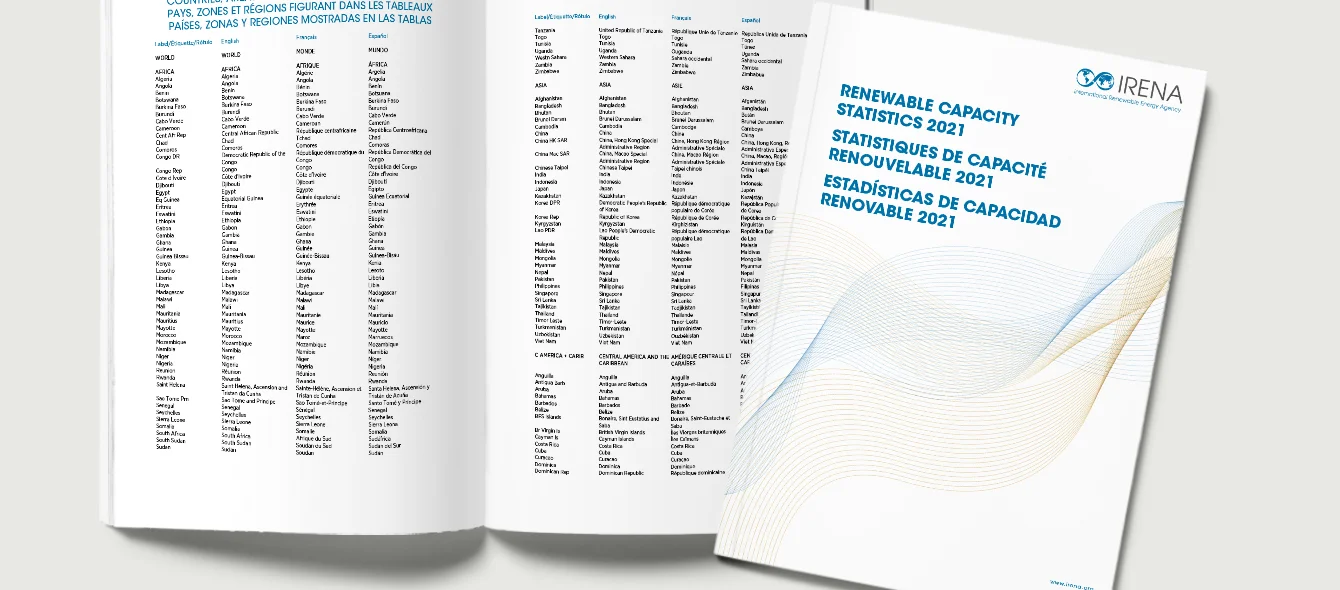Despite the COVID-19 pandemic, the expansion of renewable energy did not lose momentum in 2020. In fact, according to current renewables statistics by the International Renewable Energy Agency (IRENA) global installed capacity increased to just under 2,800 gigawatts (GW), representing a 260 GW-plus increase compared to the previous year. Consequently, the share of total capacity accounted for by renewable energy rose by two percentage points to 36.6 percent.
Some 80 percent of all new electricity generation capacity was thus regenerative. Asia’s lead remains undisputed. Nearly 46 percent of global capacity is installed in the region with the largest surface area and population in the world – above all due to the rapid build-out in the People’s Republic of China.
Globally Installed renewable capacity (in MW)
Source: IRENARenewables expansion has progressed steadily in recent years. It is particularly remarkable that the sector posted the greatest absolute year-on-year growth in the year of the coronavirus. Says IRENA Director General Francesco La Camera, “This is a remarkable demonstration of resilience and hope in a clean and just future.”
Wind and solar continue to play catch-up
A look at the variety of energy sources shows wind and solar continuing to gain significance. Hydropower’s 41.2 percent still represented the largest share of the renewable mix in 2020, but it has been on a constant decline since 2011 (68.4 percent) in favour of onshore and offshore wind turbines as well as solar farms, which have made up lost ground from 16.6 and 5.4 percent to each account for about a quarter of regenerative capacity.
Installed renewable capacity by energy source in 2020 (in %)
Source: IRENAA whopping 1,286 GW of aggregate capacity is installed in Asia. Europe follows in second spot with just under 610 GW ahead of North America with 422 GW. As Asia’s share of worldwide capacity has grown steadily from nearly one-third to almost half in the last decade, Europe and North America have both lost ground in percentage terms. These two areas have seen their shares drop from 26 and 19 percent to 22 and 15 percent. Despite this, capacity in both regions has nearly doubled during this period. This is predominantly due to China’s blistering pace which has driven up capacity from 286 GW in 2011 to 925 GW today. Besides besting every other country on the planet, this ranks the People’s Republic first among all countries, ahead of the USA (311 GW), Brazil (150 GW), India (139 GW) and Germany (137 GW).
Installed renewable capacity by region in 2020 (in MW)
Source: IRENASouth America’s electricity mix has the greatest potential
Increasing numbers of wind turbines and solar modules have constantly driven up renewables’ share of power production capacity. In 2011, it stood at a quarter – thanks above all to hydropower. By 2020, it had grown to nearly a third. However, the order of merit changed: Most recently, the biggest potential was harboured by South America (67.8 percent), Europe (49.8 percent) and Oceania (46.2 percent). Asia’s 35.7 percent makes the region just below average. This is owed to the fact that may Asian nations build large-scale conventional power stations. Therefore, Asian electricity generation capacity remains dominated by coal and gas, despite the ever-increasing share commanded by renewable energy.
Renewable share of electricity capacity in select countries and regions (in %)
Source: IRENAClimate goals only achievable with faster growth
Nevertheless, the statistics paint an absolutely positive picture – especially in view of the economic ramifications of the COVID-19 pandemic. The downturn has left the energy sector and – above all – the renewables business largely unscathed. This enabled the build-out to continue making leaps and bounds. And according to La Camera, this is really necessary: “Although the course is clear, we need a much faster energy transition in order to bring the energy system in line with a 1.5 degree Paris-compliant future. During this decade, the international community must view the momentum reflected in this report as a source of inspiration to carry on:”
Photo credit: IRENA
